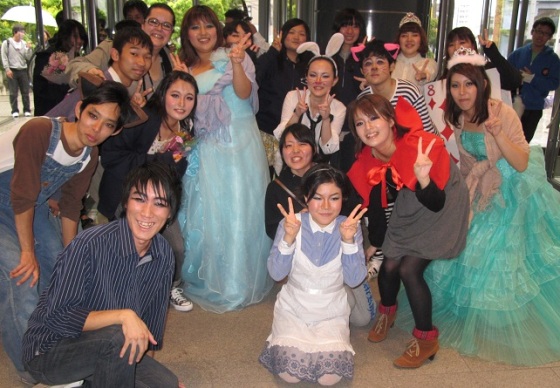Summer Wars is a Japanese animation movie released in 2009, quite successful in many aspects, including the promotional one -even before the première, a few mangas based on the movie were available-. Mamoru Hosoda, its director, repeats with teenager protagonists after The girl who leapt through time, and recreates a whole world of fantasy not far from the Japanese mind, at least in values.
We have Kenji, a shy high-school computer and maths genius but socially at kindergarten level; and Natsuki, his sempai, self-confident and matured, but at the same time feminine and willing to be protected. These two are a representation of the ideal Japanese young couple, and many times not far from reality, because eventually one ends up being what one decides to be.
We also have Wabisuke, my favourite character, demonized in the movie but not sufficiently explained, I think. Handsome, attractive and intelligent, he had left Japan for the US, where he had become by himself a scholar in computing and a professor at a top American university. He represents individualism, self-esteem and a desire to stand out; and his rejection of the status quo and the rules of the Japanese society make him a “rebel without a cause”. When he is back in town, he is not accepted the way he is and decides to destroy the old world to create a new one.
Finally we have Sakae, the obaachan, a symbol of the authority based in age and experience, the one who keeps the big family –there are plenty of uncles and children- together and is obeyed without discussion. She is a tradition guardian and the one who remembers each member of the family his/her place, i.e. lack of social mobility. In the movie, Hosoda also shows her as a well-connected person; and for that reason powerful in her mission to metaphorically keep society the way it is. When she dies, the whole family, young and old, stay together and continue with her ways.
All these fights between tradition and modernity –order and “chaos”- take place on a cybernetic level, in a virtual world with avatars representing humans and living their wishes: that’s why when your avatar die, a part of you also vanishes, something like Surrogates, the 2009 movie with Bruce Willis.
Of course, in the end, the power of the group, and especially the family, wins over the individual, and the Japanese society, represented by an extended family owning a temple, remains untouched, even in the times of avatar technology.
The group, the group, always the group.

